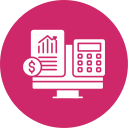Reporting, Insight, and Decision-Making Speed
Cloud tools often surface live dashboards that guide daily choices. Traditional systems may deliver deeper control but slower updates. What KPI would change your daily decisions if it were always current? Tell us and we’ll feature examples.
Reporting, Insight, and Decision-Making Speed
Integrations feed rolling forecasts, while structured on-premise models can excel at custom depth. Which matters more to you—speed or granularity? Subscribe for our scenario templates and share your forecasting horizon in the comments.
Reporting, Insight, and Decision-Making Speed
Cloud reporting can auto-refresh visuals, while traditional reports benefit from rigorous, controlled preparation. Either way, repeatable workflows save sanity. Tell us your board pack ritual, and we’ll crowdsource a checklist you can reuse.
Reporting, Insight, and Decision-Making Speed
Lorem ipsum dolor sit amet, consectetur adipiscing elit. Ut elit tellus, luctus nec ullamcorper mattis, pulvinar dapibus leo.



